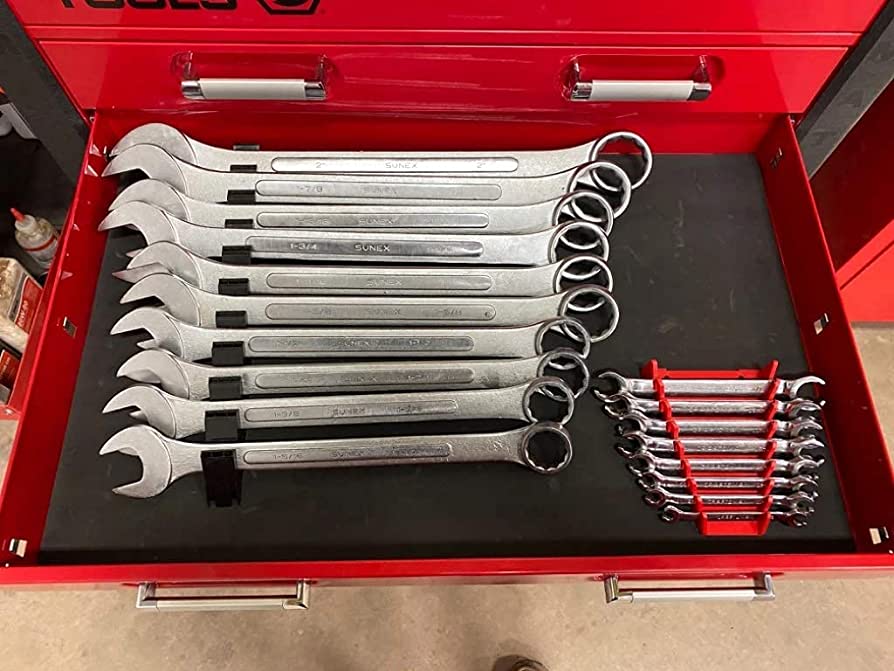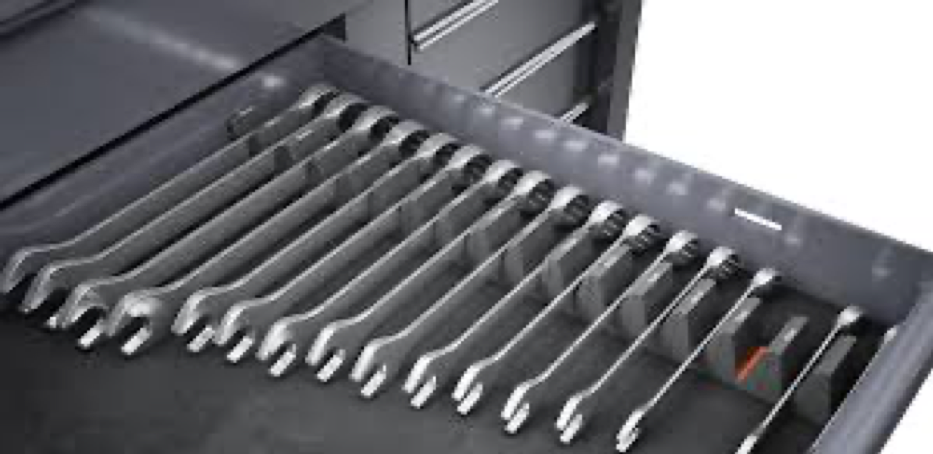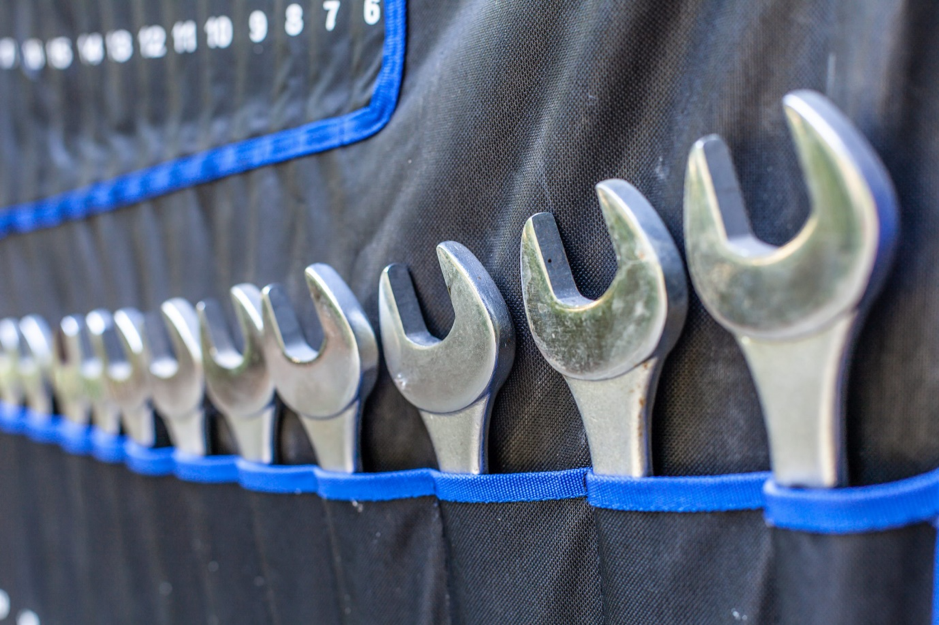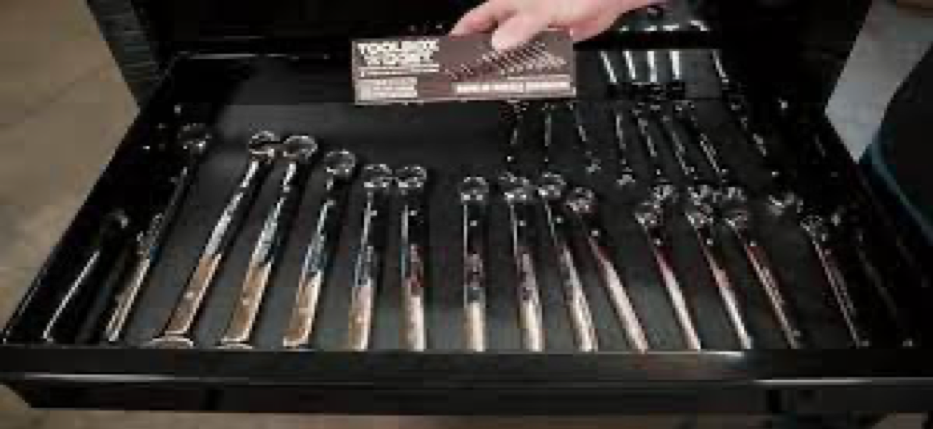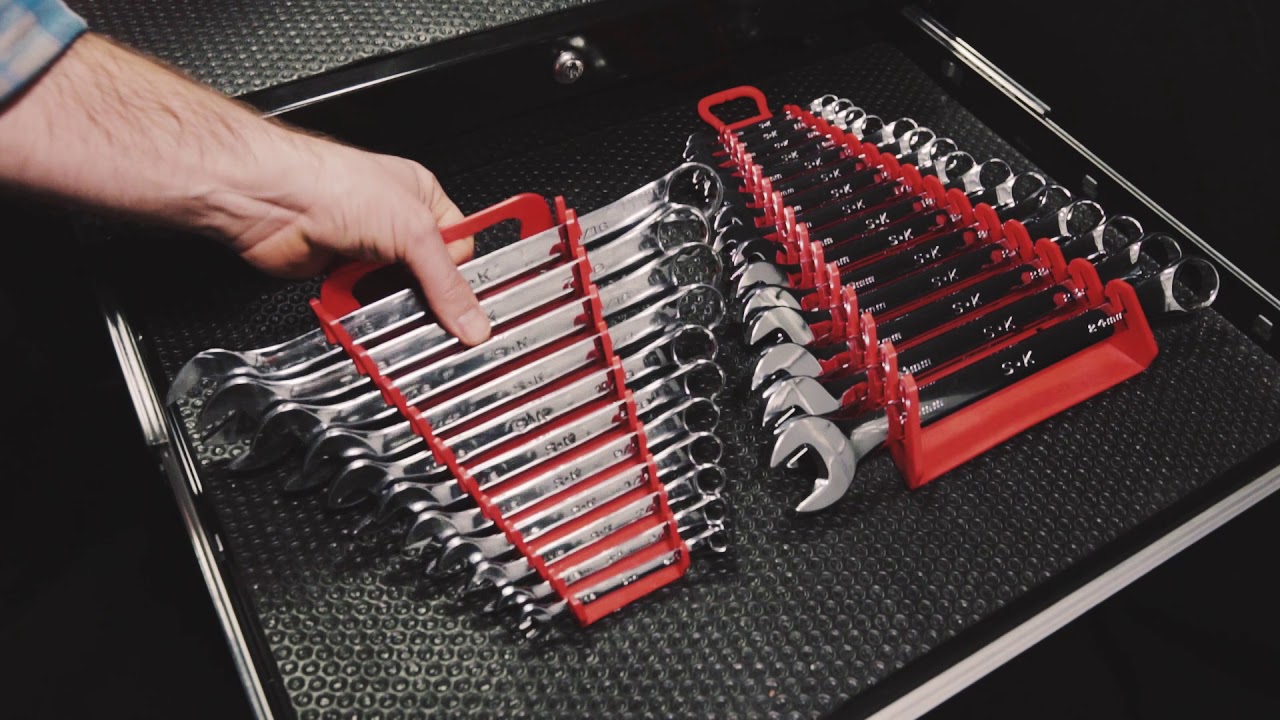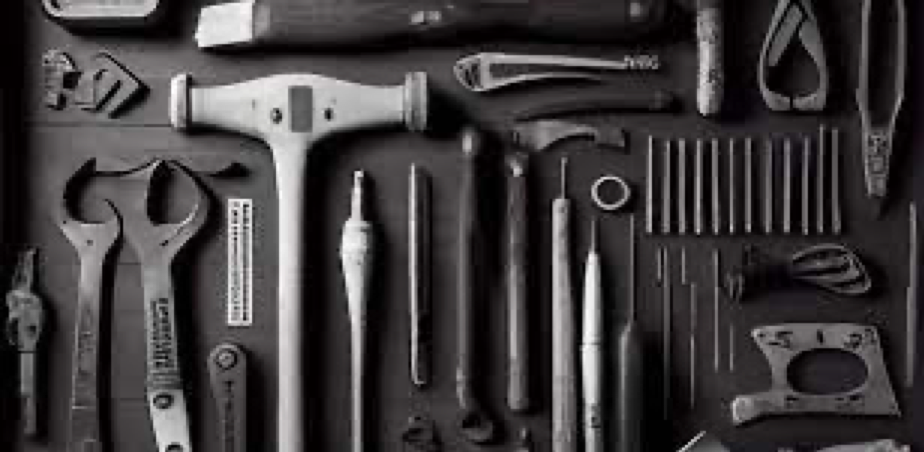What is a Wrench Organizer?
The wrench is a vital hand tool needed for doing tasks involving nuts and bolts, such as plumbing, auto repair, HVAC, and other tasks. So, whether people are busy in the trades professionally or are avid do-it-yourselfers, they definitely have a collection of wrenches in all different forms and sizes. Finding the right wrench at the right time can be difficult if these necessities are recklessly scattered around in a jumbled mess.
Luckily, a wrench organizer saves time and also frustration, correctly arranging all of the wrenches at a single glance inside the toolbox or wherever is most convenient.
These heavy-duty plastic slotted trays or racks may properly store around 10 – 40 wrenches, allowing for easy identification and access. Additionally, by grouping the wrenches, these organizers make better use of the limited room in the chest or toolbox.
How to Save Space in the Wrench Organizer?
Turning tools and foam on their sides to make an upright tool organizer is one technique to make more room in the tool chest. A typical organizer works well for smaller tools like wrenches. It can also provide users with the extra room they need to keep both standard and metric wrenches.
Measure the depth of both the tools and tool drawer (with them lying on their sides) to do this. Verify that the tools can be inserted at this angle into the drawer. Next, calculate the length and width of the foam strips so that they are the same size as a drawer. Users should now make slits in the foam for their tools. Make the slots deep enough to accommodate the tools comfortably. Users should definitely use one of their instruments to gauge the depth and examine it. Before cutting every slit, count the number of tools available currently and evenly space the slits.
By the time this is done, users will be able to fit a lot more tools in one single drawer than they could if they were not organized at all.
General Safety Tips while using Wrenches
- Use the proper wrench for the task at hand, such as a pipe wrench for bolts and nuts and a general-purpose wrench for plumbing fittings.
- To prevent slippage, choose the proper jaw size.
- Wrenches with broken or damaged tips, such as open-ended wrenches with wide jaws or box wrenches, should be thrown away.
- Where there is a risk of flying objects or falling debris, wear a face shield or safety goggles (together with safety goggles or glasses).
- When possible, use a socket wrench or box with a straight handle over one with an offset handle.
- To avoid falling and hurting oneself in the event that the wrench slips or anything (like a bolt) break unexpectedly, position the body so that nothing will lose equilibrium.
- Before exerting pressure, ensure the open-ended wrench’s jaw is completely engaged (fully seated, “flat,” not slanted) with the nut or bolt.
- To avoid unanticipated slippage and potential injuries, make sure the pipe wrench’s teeth are clean, sharp, and free from dirt and oil.
- The control of the turn while using an adjustable wrench should be away from (towards) the fixed jaw.
- To ensure that the ratchet wheel is engaged with the pawl for the direction users are putting pressure, first apply a tiny amount of pressure to the ratchet wrench organizer.
- Slowly and steadily pulling on a wrench is preferred to quick, abrupt movements.
- When using socket extensions, hold the ratchet wrench by the head.
- When finished working with the wrenches overhead, step aside.
- Keep tools properly maintained (oiled and cleaned).
- Make sure that when being used, adjustable wrenches are not “slide” open.
- After use, tools and wrenches should be cleaned and stored in a toolbox, rack, or tool belt.
Top Benefits of an Organizer for Wrenches
It might seem like a small thing, but keeping everything in its proper position organized is essential for accessibility and usability. A few advantages of organizing the tools are shown below.
Read More- How Do You Treat a Leaking Roof?
-
Enhanced Accessibility
Users can quickly locate the tools they need if they organize their tools properly. They can save themself the hassle of having to search through the entire store for a certain one. People have given up on finishing their work out of irritation at not being able to get a tool when they need it.
In the store, users might store things differently than their neighbor does. Create a structure for storing tools and decide what functions the best. Ideally, users can create a system based on their routines.
-
Correct Maintenance
Tools will last longer if they are stored rightly. The tools won’t accumulate rust, grease, or dust if users store them. They will not only last longer and function better if proper care is taken. Users can save money by taking care of their tools since they won’t need to replace any that get damaged. Determine which tools must be stored and which can be left outside.
-
Help Workers Move Efficiently
Tools that are maintained in clumsy locations or that are arranged haphazardly can make it difficult for workers to move around the area effectively. When tools and materials are stored in the order of usage or in locations that are simple for a worker to access, a huge amount of energy and time can be saved.
-
Maximized Space
It’s essential to have vertical space inside the store or tool chest. Since it’s convenient, many people keep their main tools at arm’s length. Wall cabinets are a good option for keeping infrequently used goods higher in the chest.
-
Less Time is Wasted
Users may be working on a project instead of spending time looking about and looking for the thing they need. Time is money in case this is a career or side business, after all. When storing tools, it is more effective to keep them close together so that they are accessible when it is time to get to work. As a result, things are also more easily available since users can always find what they need.
-
Saves Money
Tools that are damaged or lost require replacement, which costs money. Although it might not seem like a huge concern now, if it continues to happen frequently, it might cost a lot of money. As a result, users’ money may disappear quickly. They will save money by storing and organizing their tools, which is one of the main advantages. They can then spend their money on more essential items.
*Pro-Tip*
Use labels to know where every item or tool is more easily. This is crucial when organizing tools, for instance, since different plyers and other tools come in varying sizes. Spend no time looking for the precise item required.
Wrap Up
Tool organization is a simple technique to make a space simpler to operate in since it tends to be more productive and where lesser mistakes are made. Hence, a wrench organizer is a must for users to suit their needs, regardless of whether one has hundreds or just a few wrenches. The newly-organized wrenches can be kept in the toolbox drawer or tool chest, or they can be hung on the wall of the shop.
